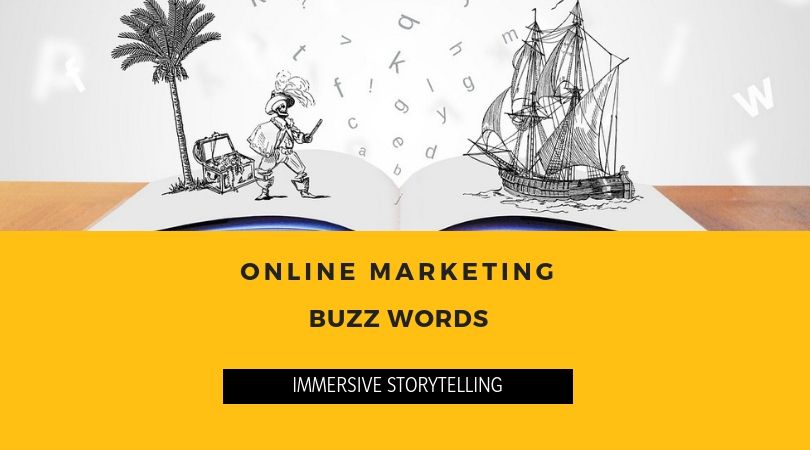 Great stories have ways of drawing people in, and that is not just true of written and spoken works. More and more often, marketers use cutting-edge technologies and interactive forms of media to engage in immersive storytelling that serves their own purposes.
Great stories have ways of drawing people in, and that is not just true of written and spoken works. More and more often, marketers use cutting-edge technologies and interactive forms of media to engage in immersive storytelling that serves their own purposes.
Many of the most prominent and successful immersive storytelling projects at the moment rely on tech like virtual reality or augmented reality to connect with and engage audiences. Even merely using conventional types of media in ways that allow people to participate and become engaged, though, can enable truly storytelling and experiences. While immersive storytelling has so far been off limits to many, that is beginning to change quickly.
Breaking Through Shields With New, More Immersive Forms of Storytelling
It is no secret that many people today are skeptical about marketing, and that frequently proves to be a real challenge for marketers. Types of marketing that are easy to ignore or which are actively annoying tend to be a lot less successful than in the past.

The goal of all immersive storytelling is to make audience members feel like a part of the action instead of being mere passive targets. The authentically rewarding experiences that storytelling can enable are powerful tools for marketers to wield.
Many Technologies and Techniques Can Facilitate Immersive Storytelling
Making use of storytelling does not require sticking to any one technology or approach. In fact, many of the most successful examples of immersive storytelling incorporate a variety of different techniques. Some of those that are most frequently employed to great effect include:
- Virtual reality. While the field of virtual reality (VR) is still in its infancy, few doubt that it can enable profound immersion. VR puts participants inside artificial worlds defined by features like digital graphics, motion-tracking accessories, and high levels of interactivity. One potential downside of VR is that it tends to require more equipment and special-purpose content than other immersive storytelling platforms. More affordable VR headsets like Facebook’s Occulus Quest are starting to make that less of a problem, while doing away with wires that can detract from immersion.
Augmented reality. The world of everyday life is quite immersive in its own right, and strategically augmenting it can take things to the next level. Augmented reality (AR) sees digital elements being mixed with real-world backdrops, or vice-versa. AR enables immersive storytelling by combining the indubitable substance of the physical world with creative, engaging, artificial embellishments. Niantics’s notoriously successful Pokémon Go mobile game has drawn millions into its AR environments.
- Interactive media. Giving audiences agency instead of keeping them passive often proves enough to enable immersive storytelling. A simple, pannable 360-degree view of a home’s interior or a new car can leverage the power of immersive storytelling for commercial purposes. Even supposedly staid newspapers like the New York Times have been using interactive, media-rich web pages to immerse readers in the stories they tell.
- Hypothesis-driven design. It can be expensive and time-consuming to engage in immersive storytelling, especially given uncertainty about the results. Organizations like National Public Radio have met with success by using spartan immersive storytelling prototypes to judge whether particular approaches will work. Tweaks to that initial “hypothesis” can be made more easily and aggressively when relatively little has to be committed. Testing and fine-tuning, instead of remaining committed to an initial idea throughout, leads to more storytelling.
Even More Storytelling Awaits
Technologies and approaches like these have been used for years by major brands worldwide to persuade in ways that were never previously possible. BMW’s 360-degree Backwater film was an early star of the New York Times VR app when it premiered in 2015.

Just as even small businesses now regularly make and post YouTube videos and infographics, so will more immersive forms of storytelling soon become more democratized. Immersive storytelling is not only here to stay, it is becoming a far more accessible option for marketers at every level of the industry.

 Augmented reality. The world of everyday life is quite immersive in its own right, and strategically augmenting it can take things to the next level. Augmented reality (AR) sees digital elements being mixed with real-world backdrops, or vice-versa. AR enables immersive storytelling by combining the indubitable substance of the physical world with creative, engaging, artificial embellishments. Niantics’s notoriously successful Pokémon Go mobile game has drawn millions into its AR environments.
Augmented reality. The world of everyday life is quite immersive in its own right, and strategically augmenting it can take things to the next level. Augmented reality (AR) sees digital elements being mixed with real-world backdrops, or vice-versa. AR enables immersive storytelling by combining the indubitable substance of the physical world with creative, engaging, artificial embellishments. Niantics’s notoriously successful Pokémon Go mobile game has drawn millions into its AR environments.









